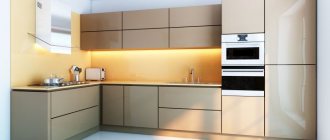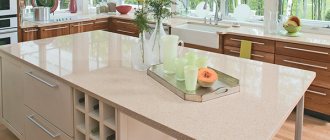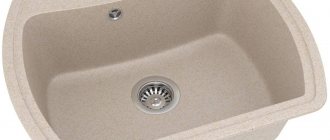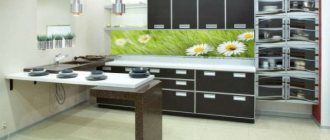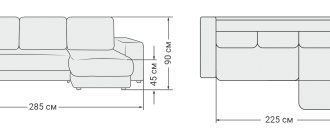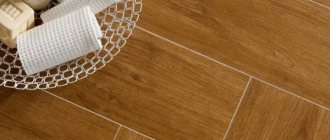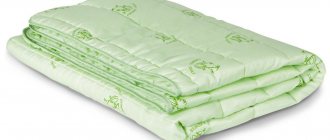Sauces, baked goods, desserts, cream soups and much more can be prepared using a blender and mixer. The names of these devices are translated from English as “mix,” but what is each device best suited for?
You can understand this issue only if you learn about the differences between them.
What is a blender used for?
The working element of the blender is quickly rotating steel blades. They do an excellent job with tasks such as chopping vegetables, grinding food into a soft, homogeneous puree, and even crushing ice.
To prepare a small portion, it will be convenient to use an immersion model, and for processing a large volume, a stationary model is perfect. The design of a hand blender consists of a handle with controls and a “base” with knives.
The kit may also include small containers for chopping vegetables and a whisk attachment for whipping.
A stand blender is a tall bowl with blades at the bottom. Sometimes the kit may include a mill attachment for grinding coffee, nuts or spices.
Using the device is quite simple: you place the food in the container, close the lid, press the button at the appropriate power, and in just a couple of seconds the ingredients will be crushed. With a stationary blender, preparing smoothies or purees will not be difficult.
Blender or mixer - what to choose?
First you need to understand: for what purposes such a device is needed. To do this, analyze the operations that you most often do in the kitchen. Understand which ones cause irritation and reluctance to do it. Actually, the choice is small. Practice shows that such operations are:
- Beating ingredients for a dish;
- Grinding components for subsequent mixing;
- Mixing products in a certain proportion.
It may turn out that you do not like all these actions. Now you should study the assortment of stores selling household appliances. Today this is not at all difficult to do. The shelves are simply bursting with various kitchen appliances from world brands. Do not hurry. Check with the store manager. And only then make your choice.
Remember the basic rule: if you like to bake, then buy a mixer. It is designed for beating dough and preparing cream. When there are other dishes on your menu, it is better to buy a blender. It is capable of grinding any product.
What is a mixer used for?
It is important to note that the difference between a mixer and a blender is that the former ensures mixing of products using whisks made of durable metal.
The kitchen appliance is used for whipping eggs, cream, cream and making cocktails, because its rapidly rotating beaters give an airy texture to liquid ingredients.
Just like a blender, there are two types of mixer:
- Manual model - it must be lowered into the future dough or cream, holding it by the handle on the body, and, slightly changing the position of the hand, beat or mix well.
- And a stationary model , which, in turn, is equipped with a control panel on the body and a large removable bowl for whipping large quantities of products. Usually it has two types of attachments: a whisk and a spatula, necessary for mixing dense dough. The convenience lies in the fact that this model frees your hands, allowing you to take on other work.
Mixer functionality
A mixer is an electrical appliance that beats or mixes soft ingredients. Its working element is a pair of metal whisks rotating at high speed. They mix bulk or liquid components, turning them into a homogeneous mixture and saturating them with oxygen. For mixing viscous components and kneading thick dough, powerful models are equipped with hook-shaped steel attachments.
Types of mixers
Different types of mixers differ in power, which can be adjusted. For most models, the rotation speed of the nozzles includes 2-10 modes. They come in these types:
- The submersible unit is small in size. It is easy to hold in your hands during use. In some models you have to keep the power button pressed, which is not very convenient. The submersible electric appliance kneads thin dough well and combines various ingredients. It is easily disassembled and compactly folds into a box.
- The tabletop unit consists of a bowl for food, whisks and a stable stand. He needs to be given a permanent place. The electrical appliance takes up part of the kitchen table, but once turned on it works independently.
What tasks does a mixer perform?
With a mixer you can beat milk, egg whites, butter, sour cream or cream. It is used to prepare dough, mayonnaise, creams, cocktails with lush foam, and sauces. If you put chopped fruits or berries in a whipping container along with milk, the finished drink will contain large pieces. To whip the cream, the butter must be softened or melted in advance.
On a note! To prevent the mixture from splashing while whipping, the products should be placed in a deep container.
The advantages of the mixer include the following characteristics:
- quickly whips liquid products;
- it is easy to clean;
- the motor does not overheat even during prolonged operation.
Among the disadvantages are the following features:
- beats only liquid or softened ingredients;
- noisy during operation;
- large sizes of stationary models.
Advantages and disadvantages
Now that we have figured out what each device consists of and what it is intended for, it is necessary to identify the advantages and disadvantages.
Blender advantages:
- Capable of grinding cooked or raw vegetables and fruits, as well as hard foods;
- Allows you to bring the ingredients to a homogeneous consistency;
- Has high speed and power;
- It has huge potential in terms of functionality with additional attachments.
And there are no minuses:
- Heats up quickly and therefore requires a break during operation;
- With its help it will not be possible to achieve an air mass;
- Has a loud noise;
- The stationary model is intended only for obtaining liquid or semi-liquid consistencies (except for the mill attachment)
Despite the versatility of a blender, the quality of individual actions can be significantly worse than that of specialized equipment. This is important to understand when choosing kitchen equipment.
The mixer also has its advantages and disadvantages:
Mixer advantages:
- Easy to obtain airy and light texture of dough or cream;
- Suitable not only for whipping liquid ingredients, but also for kneading various doughs;
- Due to the lower power, it does not heat up too much, so it can be used for a long time;
- Whisks ingredients quickly and easily.
Of course, the device has some disadvantages:
- It will not be possible to grind solid components, even if you try;
- Will cause difficulties when whipping and mixing thick and dense masses;
- Just like a blender, it makes noise when working.
Tips for choosing
When choosing a device, pay attention to several characteristics:
- Power. It determines how efficiently the unit will operate. Unlike devices with high power, with low power they deteriorate faster and overheat.
- Material of the body and nozzles. Everything should be as strong and dense as possible. This is a kitchen job, which means food particles should not get stuck in small holes and crevices.
- Availability of various modes. This is important if you are making different dishes.
- Easy to use and clean. If the equipment is difficult to assemble, it will not be convenient and comfortable for the housewife.
When purchasing kitchen appliances, special attention should be paid to the power of the device.
Important! When choosing a device, it is better to give preference to proven popular brands, regardless of what exactly you choose. Their prices may be higher than other brands. But the price most often corresponds to the quality. Don't skimp on yourself.
When can it be used outside of the rules?
You can always do something not according to the rules, you just need to be careful and careful. Same with the blender. You can use it to whip cream!
To do this, you need a whisk attachment and a high container, which, most likely, is already included in the kit. It is important to set the device at low speed so as not to get oil instead of air foam.
It is highly not recommended to use a metal attachment with blades, because whipping will still not work, expensive products will spoil, and this is quite sad.
It is worth paying attention to the fact that the cream must be cooled in the refrigerator for 3-4 hours, or even overnight, before use.
Although you won't be able to get very active with a mixer, you can experiment with chopping soft foods (such as bananas). With enough diligence, you can bring the consistency to a puree state.
Main differences
The main difference between household appliances is their functionality.
Mixers are designed for whipping, and blenders are for grinding. This is their fundamental difference. Accordingly, the number of nozzles varies greatly. The mixer has no cutting knives at all, since the device is not designed for this. The design of mixers is similar to an immersion blender, but the number of attachments is very different. This model is not at all designed for chopping and cutting food. Manufacturers provide instructions about this in the technical specifications and advise not to use attachments for these purposes.
For convenience, it is better to have both of these devices in your kitchen so that you can use them at the right time. It is better if both devices are powerful enough to be able to quickly solve the tasks.
2 in 1 mixer with blender attachment
A 2 in 1 mixer is a combination that makes it possible to take into account all the user’s needs and get delicious dishes using one device. Grinding vegetables, turning into puree, whipping light cream or kneading dough are some of the many possibilities of this product, and it’s great!
In order for each function to work smoothly, there is a control panel for switching speeds, as well as a Turbo mode.
The unit combines all the qualities of its fellows, thereby simplifying the life of the owner. If there is a small child in the house, then a 2 in 1 mixer will help you quickly chop vegetables and meat and mix them into a consistency convenient for feeding.
Besides, you always want to surprise your guests with an unusual dessert. Such a unit is undoubtedly necessary for preparing various types of baked goods, be it cakes with fruit filling or pastries.
It is important to understand that 2 in 1 devices can either have low power, allowing you to use only a few functions, or be super versatile, activated by a light touch of a button.
No matter how wonderful the technology may seem, there will still be some shortcomings. The weakness of a mixer with a blender attachment is the unequal distribution of power between operations, so most often meat grinders do not do their job well enough.
In addition, large units weighing more than 10 kg require a separate place for them, usually on the table, since getting them out for each cooking session is quite problematic.
The most attractive for experienced housewives turned out to be compact desktop devices, which quickly and easily filled the market compared to bulky and impressive models. Amateur cooks, in most cases, prefer easy-to-use mixer-blenders from the budget line, because their chopping ability and bowl volume will do an excellent job with a small amount of eggs or preparing the most delicate puree.
Which model is better to choose?
A few tips from experts in the field of household appliances will help you solve the dilemma and decide on the choice of device:
- if there are small children in the family, it is better to use a blender - the device will help you instantly prepare pureed vegetables or fruits with the ideal consistency;
- fans of sports nutrition will also find a blender useful - they can make a protein drink or smoothie in a matter of seconds;
- A blender will also be an indispensable assistant for housewives who often prepare homemade baked goods - preparing dough and creams will definitely not take much time;
- to create a homogeneous or porous structure, you will need a compact mixer - a simple and easy-to-use device that can instantly cope with light tasks;
- if the unit is purchased for infrequent use, a mixer with 2-3 speeds and several attachments included will be a good solution.
Which is more convenient to use and store?
It is extremely important to take care of kitchen appliances, because the duration and quality of use depends on it. It is necessary not only to ensure the cleanliness and integrity of the device, but also to store it correctly.
Failure to comply with the required conditions may be grounds for denial of warranty service. Let's try to dive a little into this topic and find out what nuances there are.
Oddly enough, the answers to most questions are found in the manufacturer's instructions, in the sections devoted to storage and operating conditions. In turn, there should be recommendations for extending the service life.
General requirements for the maintenance of kitchen appliances:
- It is advisable to place the most necessary devices in easily accessible places. Let them be arranged in several rows on the shelves;
- Categorize, for example, cocktail utensils and the like;
- Place the lightest and most compact devices on the top shelves, and large and massive equipment on the bottom shelves. It is better to allocate a separate section in the kitchen for bulky units;
- Planning your workspace and furniture in advance will allow you to quickly access tools;
- Long-term storage requires removal of removable parts. To ensure that nothing gets lost, it is better to put everything together in a shipping box.
Not recommended:
- Store devices on their sides;
- Place small equipment on a vibrating surface and operating equipment;
- Store appliances on the floor.
As we have already defined, mixers and blenders are divided into stationary and manual. Now let's take a closer look at the ease of use and storage of each of them.
Let’s make a short list and carefully cover it point by point:
- The first place is occupied by manual models due to their compactness. Finding a place for them on the shelf will not be difficult. As practice shows, they must be light so that they fit more comfortably in the hand, although they still won’t be able to be used for a long time. Such devices are great for small families, as they are designed for small portions.
- Next we have miniature stand mixers and blenders . We touched on this point a little in the “2 in 1 Mixer” part. The peculiarity of these units is that the cook’s hands are free during the process, so it becomes possible to move on to other work, for example, while the dough is kneading, you can quickly crumble the future filling.
- On the last line of the list are large models of stationary mixers and blenders . A separate place for such devices needs to be prepared in advance; for small kitchens it will be problematic to allocate a certain area, creating a comfortable workspace. For this reason, this technique is more suitable for professional cooks who cannot do without large bowls and a powerful electric motor.
Sooner or later there comes a time when equipment breaks down and fails. This happens either due to improper use, or simply due to wear and tear over time. No matter how much this saddens us, we should not give up, we must try to find a solution to the problem.
Simple repairs require desire, tools and some initial skills in the field of electronics and electrical engineering.
TOP 3 best mixers
#1
Kitfort KT-1343
A universal device with many programs and functions that simplify the work.
A powerful stationary mixer with a planetary mixing system that fully complies with high quality standards.
During operation, the installed nozzle rotates around its axis and quickly moves in a circle, thoroughly mixing the loaded products.
A high-power engine and a sufficient number of attachments allow you to obtain a mixture with an ideal consistency.
Specifications:
- power – 1000 W;
- number of speeds – 6;
- number of nozzles – 3;
- case material – plastic;
- weight – 4.5 kg.
Advantages
- quality of materials and workmanship;
- elegant and stylish design;
- almost silent operation;
- intuitive interface;
- the presence of an easily removable protective cover.
Flaws
- the whisk does not reach the edges of the bowl while beating;
- slight odor from the protective plastic cover;
- short time of continuous operation.
#2
Bosch MFQ 3010
A highly reliable device that combines multifunctionality, high-quality assembly and an affordable price.
An ergonomic two-speed model with four attachments included, which is powerful enough to complete any task.
An important feature of the electric unit is the high quality of materials - thanks to this, the device is reliably protected from mechanical damage.
The mixer also has a pulse mode for quickly mixing ingredients.
Specifications:
- power – 300 W;
- number of speeds – 2;
- number of nozzles – 4;
- case material – plastic;
- weight – 0.9 kg.
Advantages
- easy removal and replacement of attachments;
- accelerated operation in pulse mode;
- reduced sound power level;
- compact design and light weight;
- high strength materials.
Flaws
- slight heating of the plastic case;
- there is a slight vibration during whipping;
- the appearance of a specific odor when operating at high speeds.
#3
Philips HR3745/00 Viva Collection
An attractive multi-tasking mixer that stands out for its quiet and long-lasting operation.
A planetary mixer, presented in a durable snow-white plastic case and complemented by suction feet, necessary for a stable positioning of the device on the work surface.
The design is equipped with a capacious bowl designed for 3 liters of liquid, a cone-shaped whisk for whipping and hooks for kneading dough.
Specifications:
- power – 450 W;
- number of speeds – 5;
- number of nozzles – 4;
- case material – plastic;
- weight – 4 kg.
Advantages
- work in accelerated turbo mode;
- wide selection of work programs;
- button for convenient detachment of attachments;
- attractive appearance;
- device for winding electrical cable.
Flaws
- no mixing spatula included;
- noisy operation at maximum power;
- plastic bowl for ingredients.
Blender Blade Repair
Hardly anyone can sharpen blender knives on their own without a special tool and a decent amount of experience, but everyone can replace a dull part according to their strength.
To do this you will need:
- Disconnect the device from the power supply;
- If you have a stationary model, then remove the bowl;
- Using a wrench, unscrew the nuts and remove them;
- Take the knife using the cloth;
- Considering the left-hand thread, unscrew.
Usually the kit comes with a spare blade, but if you don’t have one, you’ll have to buy a new one, based on the model name.
Cleaning required
Before starting work, be sure to unplug the device from the outlet.
- Unscrew the ring nut, which is located under the blade holder;
- Using gentle movements, clear the knife from the stuck object;
- If the integrity of the blades is damaged, replace them with new ones;
- Wash the parts with detergent under running warm water;
- Dry and assemble thoroughly;
- Check functionality.
To repair a mixer, it is important to know its internal structure, understand how this or that part works and what its breakdown will lead to.
The device consists of:
- Engine;
- Mode switching mechanism;
- Gears;
- Removable whisk attachments;
- Fan and ventilation holes;
- Cord strips.
Breakdown of the mixer is most often associated with disconnection of contacts in the internal structure, violation of the integrity of parts of the electric motor and gearbox, or damage to the power supply in the cord. Let's look at solutions to such problems.
- If there is no power, then you need to check that the plug is connected correctly to the network and that the cord is unbroken. If the latter is still damaged, it should be replaced. If the gearbox malfunctions, the gear stops rotating, so it is easier to update the part.
- The lack of rotation of the rim symbolizes damage to the planetary mechanism. If an uncharacteristic click is heard when turning on, it is necessary to check the rotation of the gears and the safety of the electric motor belt.
- Problems with the switch lead to disruption of the speeds. If the switch is autonomous, then only a specialist can handle it.
If it is based on mechanics, then it is necessary to check the location of the wires and clean the contacts from dirt and dust. The burnt wire needs to be replaced.
If you were unable to find out the cause of the breakdown on your own, you should contact a small household appliance repair service. Sometimes there is absolutely no choice but to buy a new device of better quality.
TOP 3 best blenders
#1
Philips HR2621/90 Viva Collection
High-performance equipment that will help diversify the menu by taking direct part in the process of preparing interesting dishes.
A sophisticated submersible model with continuously adjustable speed and an ultra-ergonomic rubberized handle that is comfortable to hold in your hand.
To prevent splashing, the manufacturer has equipped the universal gadget with a unique wave-shaped protective nozzle.
In addition to the main device, the delivery package includes an oversized chopper. The structural elements can be cleaned in the dishwasher.
Specifications:
- power – 800 W;
- number of speeds – 1;
- number of nozzles – 3;
- case material – plastic, metal;
- weight – 1.3 kg.
Advantages
- reliable protection against overheating;
- long warranty period;
- quick change of accessories with one button;
- easy power control;
- rich equipment.
Flaws
- The cord may not be long enough;
- presence of plastic odor;
- vibration during operation.
#2
Kitfort KT-1344
An ergonomic device with a detailed design that can cope with tasks of any complexity.
An inexpensive but productive model that effectively combines the functions of two devices: a chopper and a stationary blender.
The unit is equipped with a pulse mode and three operating speeds.
Thanks to this, the user will be able to create the perfect dish without any effort.
The desired mode is selected using the regulator located on the body.
Specifications:
- power – 800 W;
- number of speeds – 3;
- number of nozzles – 4;
- case material – plastic, metal;
- weight – 4.5 kg.
Advantages
- smooth speed control;
- simple mechanical control;
- optimal number of operating speeds;
- the presence of a spacious glass jug;
- high-quality grinding of solid products.
Flaws
- plastic smell;
- the appearance of scratches on the body;
- high noise level.
#3
Bosch MSM 66130
An electric unit that lovers of delicious homemade food cannot do without.
A device with a comfortable handle and a metal immersion part, 12 operating speeds and smooth speed control.
Comfortable and, most importantly, safe operation is guaranteed by the presence of a long electrical cable and protection against splashing of components.
Removable parts can be cleaned either by hand or in the dishwasher.
Specifications:
- power – 600 W;
- number of speeds – 12;
- number of nozzles – 2;
- case material – plastic;
- weight – 1.7 kg.
Advantages
- ice crushing function;
- reliable attachment of nozzles;
- measuring cup with lid;
- a large number of speeds;
- laconic design.
Flaws
- no chopper included;
- increased noise and vibration levels;
- heating of the case during prolonged operation.
Let's sum it up
So which is better - a blender or a mixer? There is no point in comparing anymore.
Having information about the structure of devices, functionality, advantages and disadvantages of a particular type of model, we can easily say that this technology complements each other.
Every self-respecting housewife should have both a mixer and a blender on hand, because thanks to them a huge range of different delicious dishes is revealed.
But you have to make the choice between a stationary model or a manual one, a budget line or an expensive one, advanced functionality or a simple device.
I hope you found this article helpful.
Origin of terms
The devices came to the Russians from America. Both terms have etymology from English. The first and second are translated into Russian in the same way - to mix. The Americans are firmly convinced that from the point of view of morphology there is no difference. What a difference in functionality!
The blender is considered the predecessor of household food processors, the first Mohican, figuratively speaking. Yes, the image is in place. The device was invented on ancestral Indian lands. The discovery was made in 1922 by Polish American Stephen Poplawski. On February 18, an application was submitted to the patent office with a schematic drawing of a blender attached.
